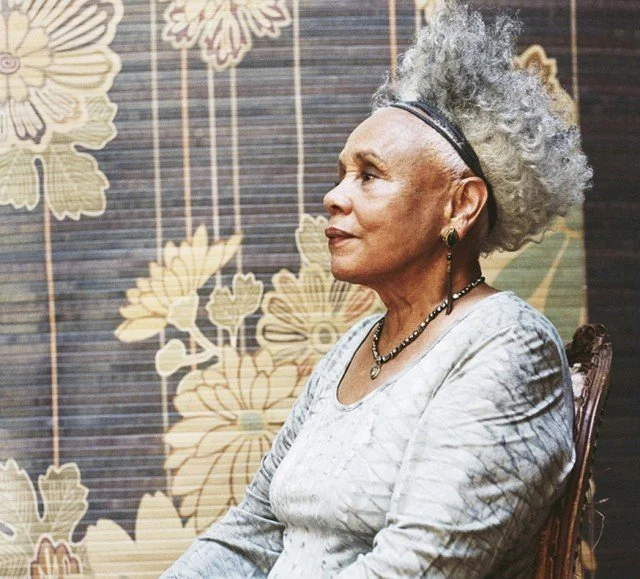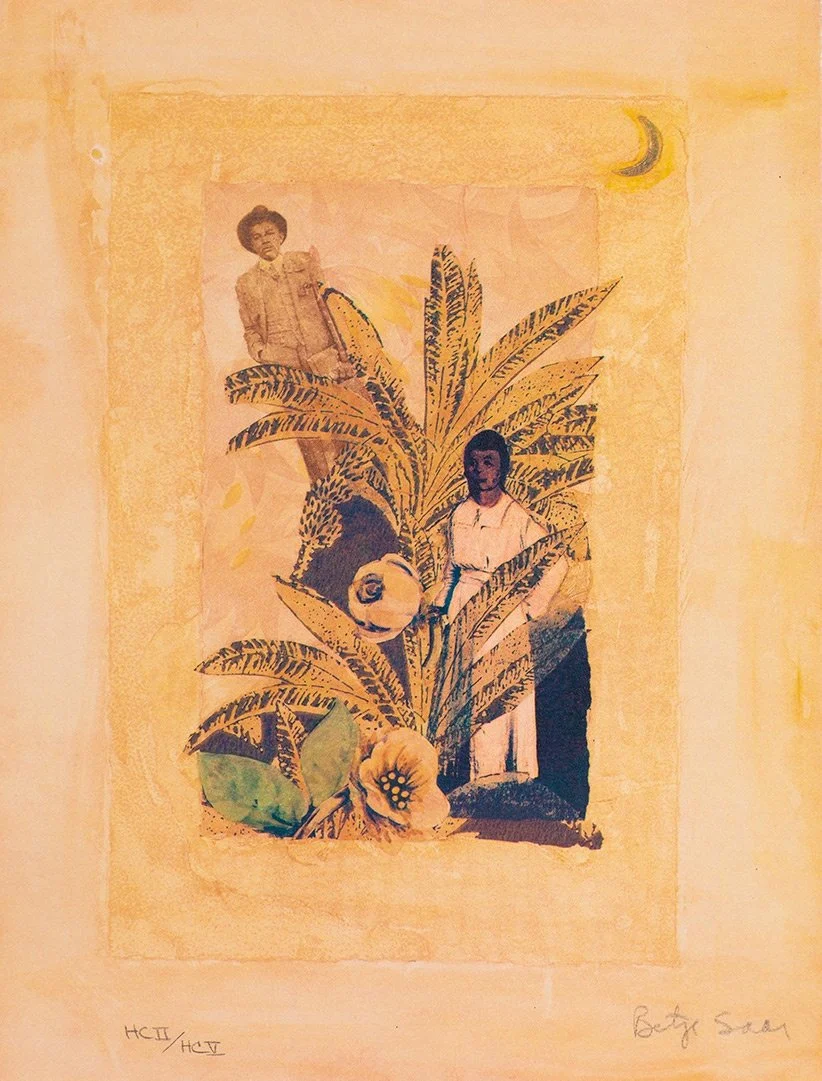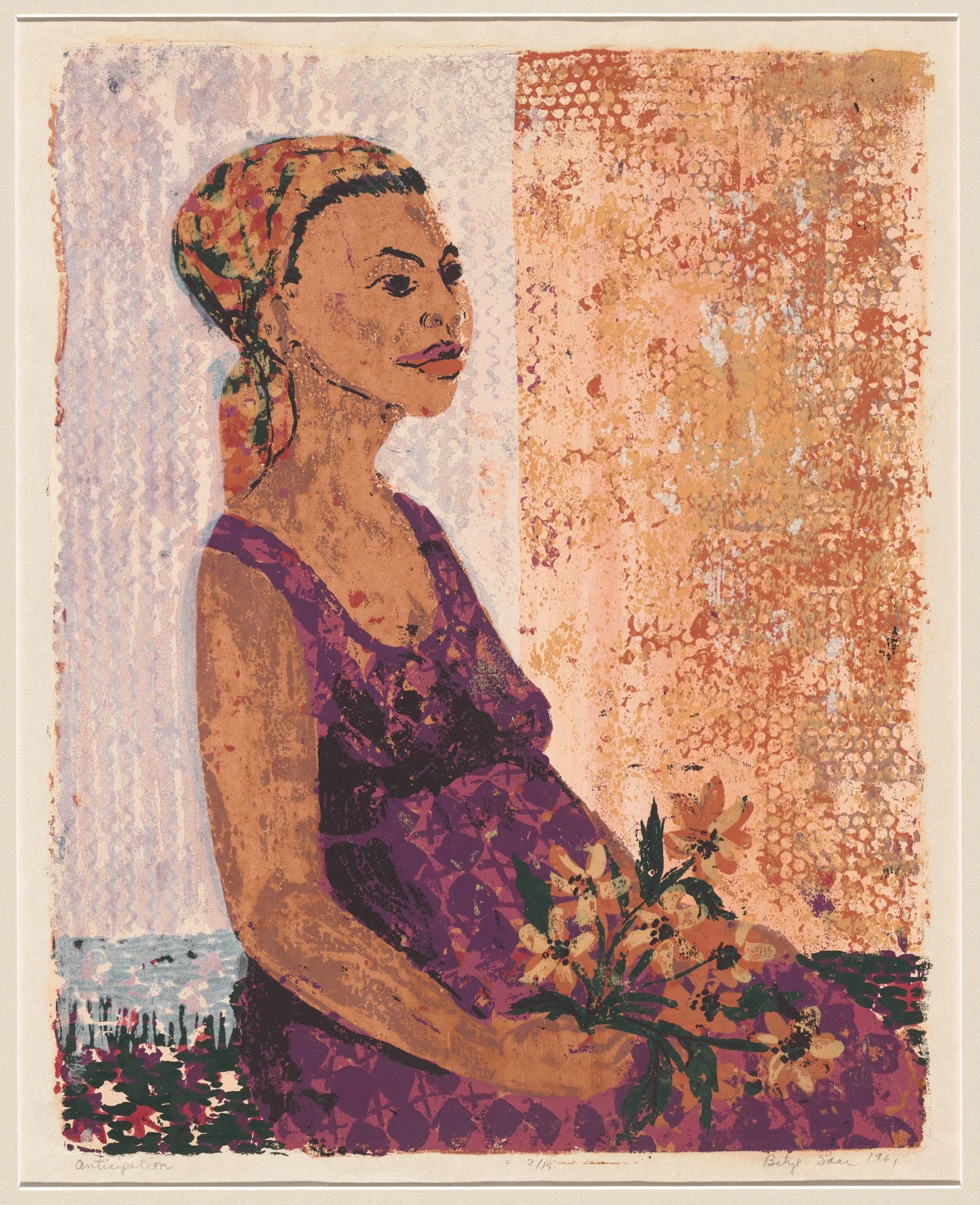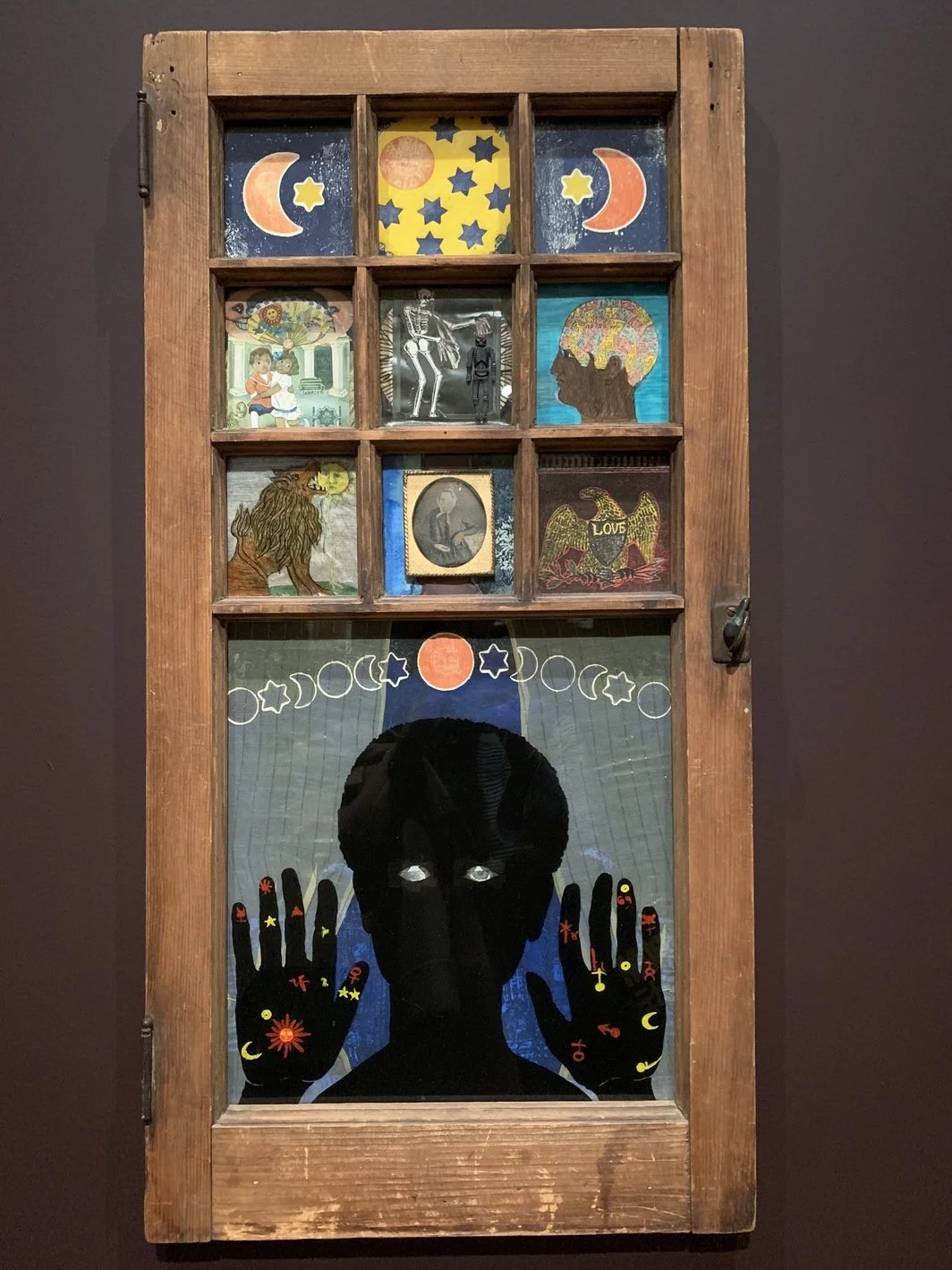Betye Saar is a renowned artist best known for her collages, which explore mystic iconographies as well as the reality of Black subjugation by combining ordinary items commonly used in the Black community.
Betye Saar
Betye Saar, who was born and raised in Los Angeles, relocated to Pasadena in the early 1930s, just before her father passed away in 1931. She actively participated in creative arts workshops in the area, which offered a broad aesthetic and cultural framework and allowed her to try out various methods of creating art.
Her initial artworks were created on paper. She used stencils, stamps, and other objects pressed into plates using soft-ground etching to recreate their patterns and textures.
Saar graduated from UCLA in 1949 with a B.A. in Design and a minor in sociology. Later, she studied design at the graduate level at several colleges in California, but after taking a printmaking class, she decided to shift her artistic direction. Saar started creating politically charged art after being influenced by the Joseph Cornell exhibit and the killing of Dr. Martin Luther King Jr. Over the course of her creative career, Saar’s work has been shown in numerous renowned institutions. She exhibited her first solo exhibition at New York’s Whitney Museum of Art in 1975. Saar has continued to produce art for over sixty years, that both recognizes or criticizes the well-known and seeks the unexplored.
Anticipation, 1961Items such as washboards, ironing boards, clothes, or other symbols of domestic life emerge as homages to the role women typically played in households that have been refigured as portrayals of the innovated female voice, passing its boundaries. Saar has frequently drawn inspiration for her work from family and familial histories and traditions. Her experience as a woman in the surging Feminist movement also appeared prominently in her art.
Liberation of Aunt Jemima, 1972Assemblage11-3/4 x 8 x 2-3/4 inches (Berkeley Art Museum and Pacific Film Archive)Black Girl’s Window, 1969AssemblageShe was motivated to follow Cornell’s approach of gathering and assembling found materials into assemblage boxes. Saar places a strong emphasis on spirituality in her works, especially in its branches that border on supernatural and alchemical rituals, much like the lineages of African and Oceanic religions and cultures previously observed, Saar has amassed a sizable collection of symbolism, amulets, necklaces, and other religious objects Her fascination with these artifacts and the meanings attached to them continue to inspire her.
In 1967, Saar visited a Joseph Cornell exhibit at the Pasadena Art Museum, which prompted significant impact on her own artistic practice. She was motivated to follow Cornell’s approach of gathering and assembling found materials into assemblage boxes. Saar places a strong emphasis on spirituality in her works, especially in its branches that border on supernatural and alchemical rituals, much like the lineages of African and Oceanic religions and cultures previously observed, Saar has amassed a sizable collection of symbolism, amulets, necklaces, and other religious objects Her fascination with these artifacts and the meanings attached to them continue to inspire her.
Grandma's Garden1972
mixed media assemblage in artist's frame13½ h × 11 w × 1¼ d in (34 × 28 × 3 cm)






